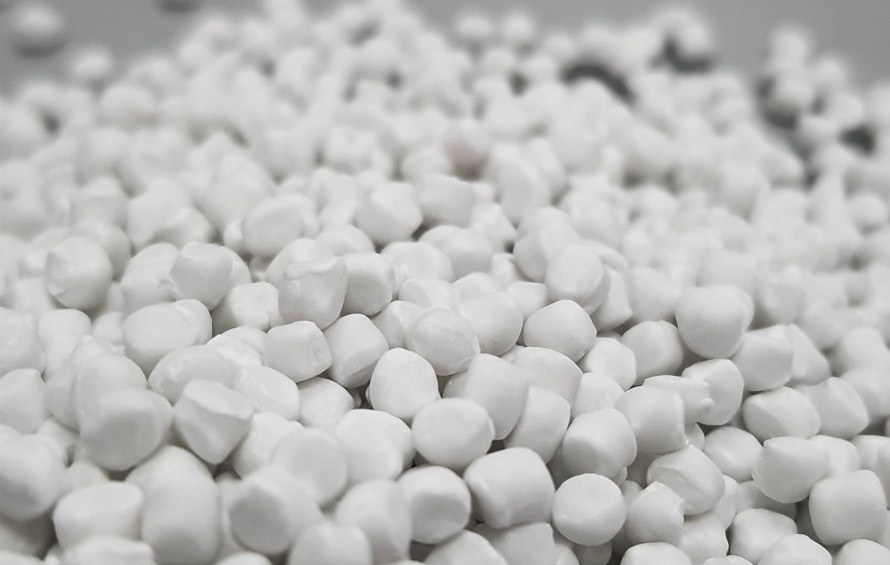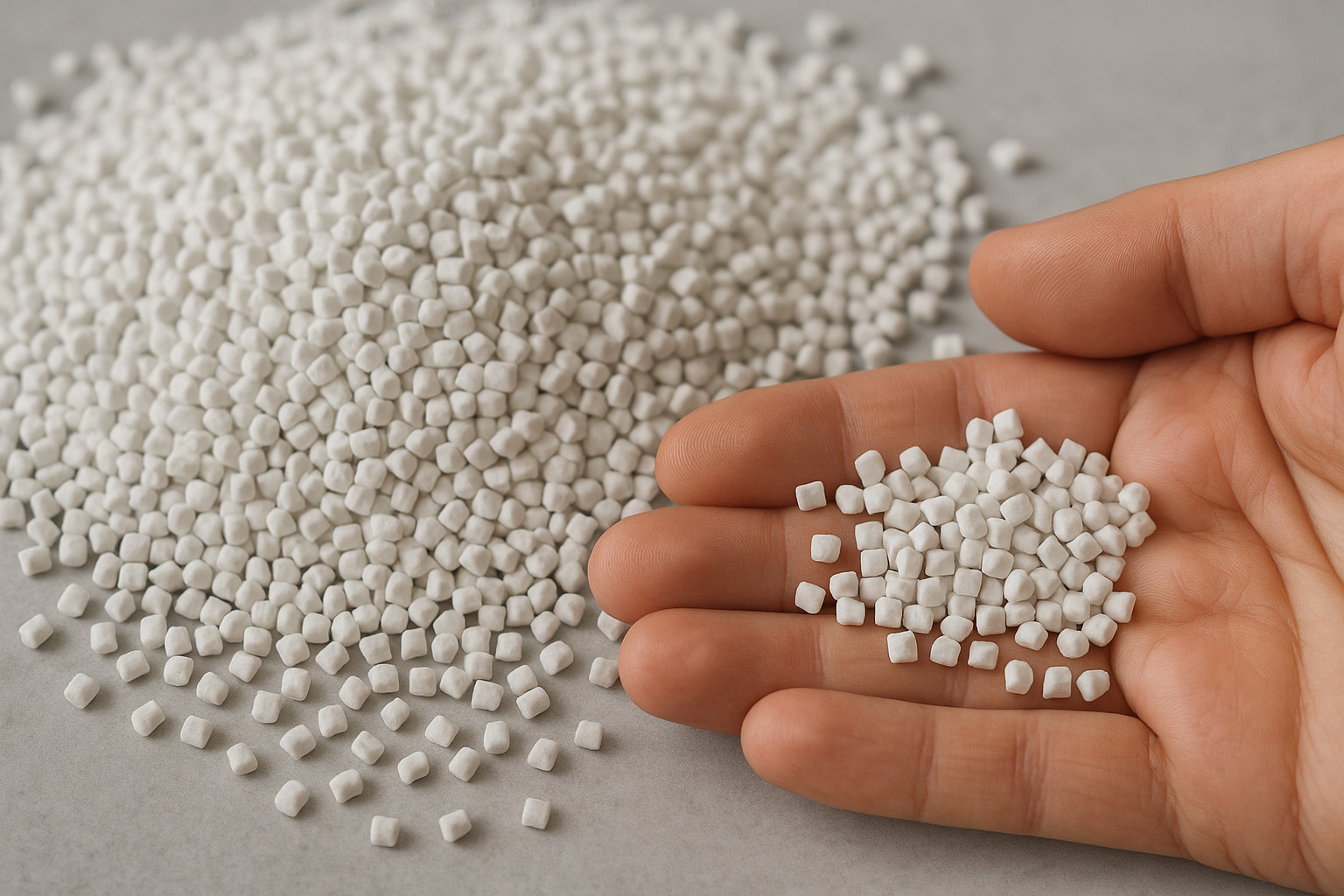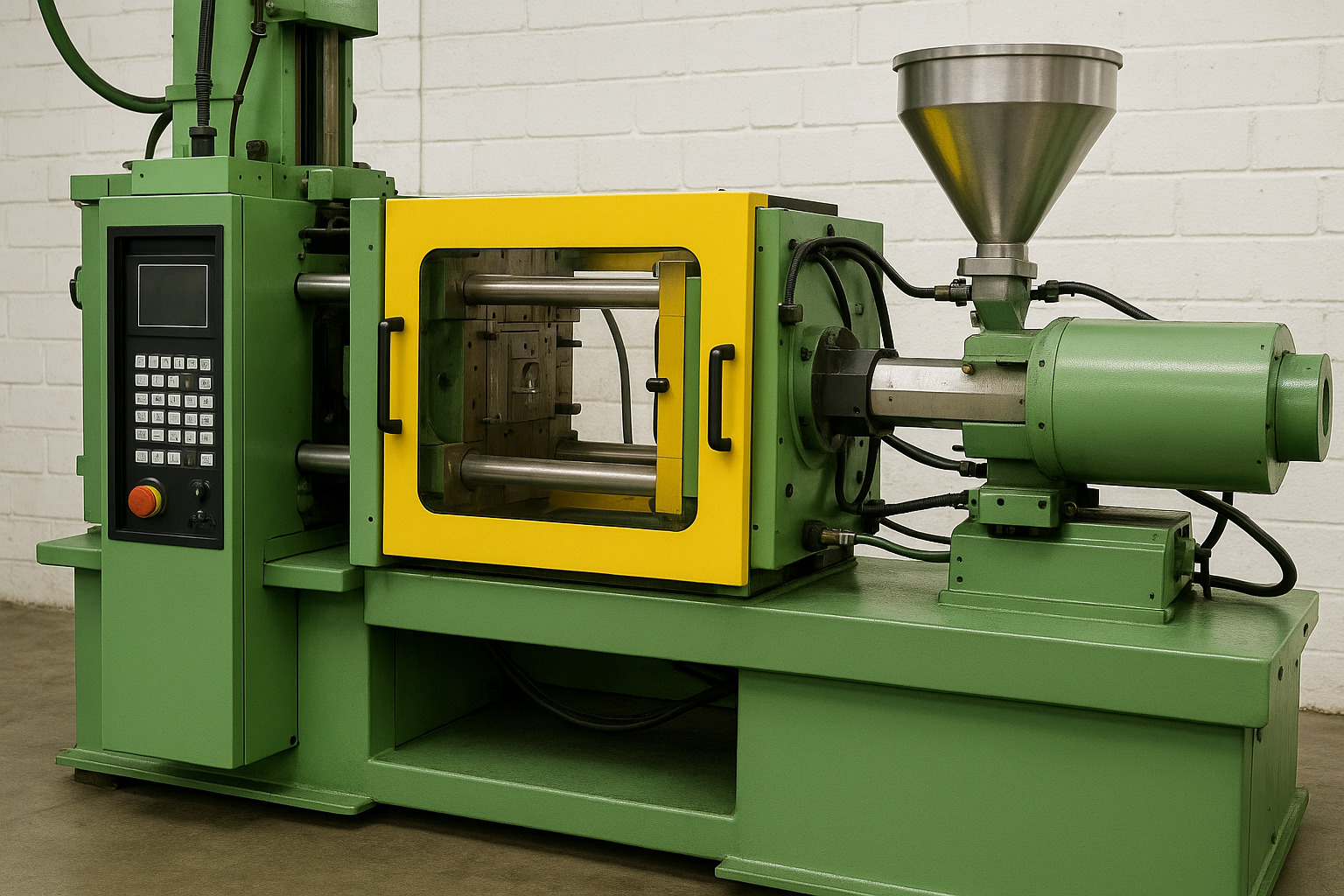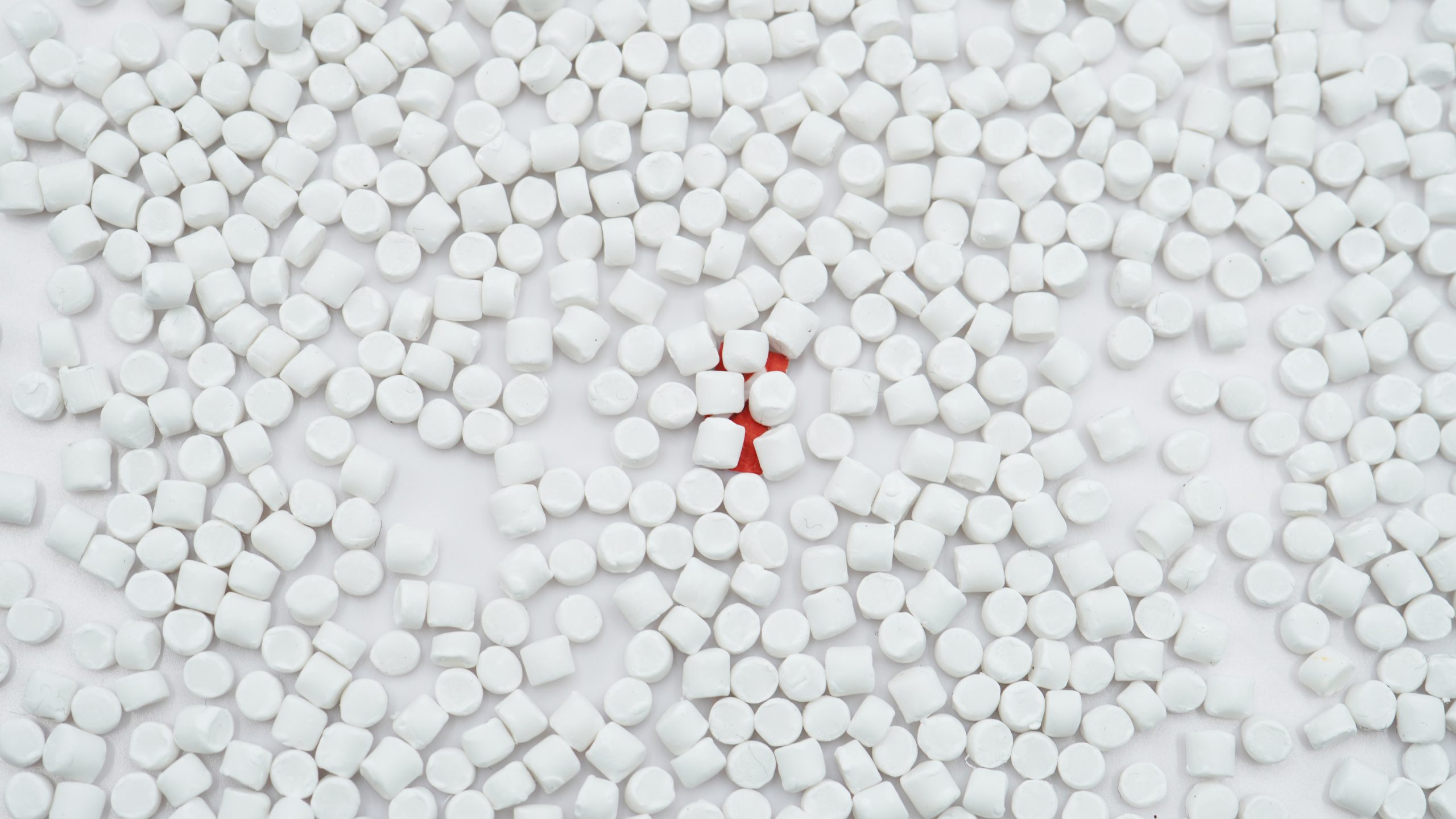Injection molding is one of the most widely used plastic processing methods in modern manufacturing. Its speed, precision, and repeatability make it ideal for producing everything from packaging and automotive parts to household appliances. However, rising material costs and increasing performance demands have pushed manufacturers to explore ways to optimize efficiency — both technically and economically.
This is where Calcium Carbonate Masterbatch plays a transformative role.
By partially replacing virgin resin with a well-formulated filler masterbatch, injection molders can shorten cycle times, enhance part quality, and cut down production costs — all without compromising mechanical properties. In this article, we break down the specific ways Calcium Carbonate Masterbatch improves injection molding performance and why it's gaining traction in factories worldwide.
Read more: Calcium carbonate filler masterbatch and 4 most well-known applications

By using calcium carbonate masterbatch, injection molders can shorten cycle times.
1. Introduction: Injection Molding & What is Calcium Carbonate Masterbatch?
1.1. A Quick Look at Injection Molding
Injection molding involves melting plastic resin and injecting it into a mold cavity, where it cools and solidifies into a final shape. The process is favored for high-volume production thanks to its fast cycle time and precise repeatability. However, achieving consistent quality while maintaining speed and efficiency is a constant balancing act.
Manufacturers continuously seek to:
- Reduce cycle time
- Improve surface quality
- Lower material cost
- Enhance dimensional accuracy
Additives like Calcium Carbonate Masterbatch have become critical tools in achieving these goals — especially in high-output industries like packaging, electronics, automotive, and consumer goods.
1.2. What is Calcium Carbonate Masterbatch?
Calcium Carbonate Masterbatch is a type of filler masterbatch that combines finely ground CaCO₃ powder with a thermoplastic carrier resin (commonly PP, PE, or PS) and dispersion agents. It comes in granular form and is designed to be mixed directly with virgin resin before molding.
Instead of acting as a colorant or chemical modifier, this masterbatch serves a functional filler role, offering benefits like:
- Cost reduction
- Improved processing speed
- Better part rigidity and finish
Because Calcium Carbonate is abundant and inexpensive, it allows manufacturers to significantly lower raw material costs while improving processing performance — making it a popular choice for injection molding optimization.

What is Calcium Carbonate Masterbatch?
2. How Calcium Carbonate Masterbatch Improves Injection Molding Efficiency
Calcium Carbonate Masterbatch does more than simply fill space in plastic parts — it actively enhances molding performance. Let’s explore the key areas where it creates measurable improvements:
2.1. Shortens Injection Molding Cycle Time
One of the most direct ways Calcium Carbonate Masterbatch boosts efficiency is by reducing cycle time.
- CaCO₃ has higher thermal conductivity than base polymers like PP or PE.
- This property allows molded parts to cool faster inside the mold.
- As a result, the part can be ejected sooner, freeing the machine for the next cycle.
Example: In a typical scenario, using 20% CaCO₃ masterbatch can reduce the cycle time by up to 15–20%, depending on the part thickness and mold design.
Faster cycles directly translate to:
- Higher output per shift
- Improved machine utilization
- Lower electricity consumption per unit
According to a case study published by Plastics Today, a manufacturer using CaCO₃ masterbatch in PP containers reduced molding time by 18% while maintaining product quality.
2.2. Enhances Dimensional Stability
Shrinkage and warpage are common issues in injection molding — especially for large or flat parts. Calcium Carbonate helps combat this.
- When incorporated into the polymer matrix, CaCO₃ acts as a stabilizer that restricts the movement of polymer chains during cooling.
- This results in less shrinkage and improved shape retention.
- Particularly useful for precision parts where tight tolerances are critical.
In applications such as appliance housings or electrical enclosures, even a 0.2 mm deviation can lead to rejection. With the addition of CaCO₃ masterbatch, these risks are significantly reduced.
2.3. Improves Melt Flow and Mold Filling
Another challenge in injection molding is achieving complete mold filling, especially with thin-walled or complex parts. Calcium Carbonate Masterbatch improves this by:
- Increasing the Melt Flow Index (MFI) of the resin blend
- Lowering melt viscosity, allowing plastic to flow more smoothly and evenly
- Reducing the required injection pressure
This is particularly beneficial in:
- Multi-cavity molds
- High-speed injection machines
- Thin-wall designs used in packaging or automotive trims
A study by the Journal of Thermoplastic Composite Materials found that PP filled with CaCO₃ had a 12–25% improvement in flow length compared to neat PP, depending on filler loading.
Read more: Significance of Melt Flow Rate - Melt Flow Index in plastics processing
2.4. Upgrades Surface Quality
A smooth surface finish is not just aesthetic — it affects how the part behaves in downstream operations like labeling, sealing, or assembly. The benefits of using CaCO₃ masterbatch are:
- Minimizes sink marks, flow lines, and weld lines
- Improves surface gloss and uniformity
- Reduces the need for secondary finishing (painting, polishing)
This is especially valuable for consumer products or visible exterior parts where appearance impacts brand perception.
2.5. Boosts Rigidity and Structural Strength
Though some fillers weaken plastics, Calcium Carbonate is known to enhance stiffness when used in proper ratios.
- Increases the modulus of elasticity of the final part
- Enables thinner-wall designs without compromising structural integrity
- Suitable for load-bearing parts like crates, battery covers, or tool cases
This strength-to-weight efficiency not only saves material but also improves product durability.
3. Cost Optimization for Injection Molders
In addition to technical benefits, Calcium Carbonate Masterbatch provides direct economic advantages — making it an essential tool for cost-conscious manufacturers.
3.1. Reduces Raw Material Cost
Calcium Carbonate is significantly less expensive than virgin polymer resins. When used in appropriate proportions:
- It can replace 5% to 30% of the base resin without compromising performance
- Helps lower cost per part, especially in high-volume production
For example: If virgin PP costs $1.20/kg and CaCO₃ masterbatch is priced at $0.60/kg, using a 20% loading can reduce raw material cost by 12–18% per unit.
3.2. Lowers Energy Consumption
CaCO₃'s higher heat transfer rate allows for:
- Faster cooling = less energy required per cycle
- Lower melt temperature settings in some processes
- Reduced electricity usage for both molding and cooling systems
This benefit is particularly valuable in regions with high industrial energy costs.
3.3. Minimizes Scrap and Rejection Rates
Stable molding conditions = fewer surprises. With improved flow and cooling:
- Air traps, shrink marks, and deformation are less likely
- Parts come out cleaner, straighter, and more uniform
- Overall rejection rate goes down, saving both material and labor
Internal data from several molding facilities show that incorporating CaCO₃ masterbatch helped cut average scrap rate by 10–25% over a six-month period.
3.4. Easy Dispersion and Compatibility
Unlike other additives that require pre-mixing or special machinery, calcium carbonate masterbatch is:
- Ready-to-use in pellet form
- Blends easily with most base resins in standard mixers
- Offers uniform dispersion, ensuring consistent performance across batches
This ease of use allows manufacturers to implement improvements without major adjustments to production lines.

How Calcium Carbonate Masterbatch Improves Injection Molding Efficiency
4. Best Practices for Using CaCO₃ Masterbatch
To maximize the advantages of Calcium Carbonate Masterbatch, it’s essential to apply it properly.
4.1. Recommended Loading Rate
- Typical range: 5–30% depending on part requirements and resin type
- Lower loadings (5–10%) for thin-walled or aesthetic parts
- Higher loadings (20–30%) for rigid, structural, or cost-driven parts
Always test new ratios in small trial runs before full-scale application.
4.2. Choose the Right Grade
Not all masterbatches are created equal. Key selection criteria include:
- Carrier resin: Should match your base material (e.g., PP-based masterbatch for PP resins)
- Particle size: Finer CaCO₃ gives smoother finishes and better dispersion
- Moisture content: Low-moisture grades reduce bubble formation and improve product consistency
Consult your supplier or technical team for grade matching support.
4.3. Proper Storage and Handling
CaCO₃ is hygroscopic — it absorbs moisture from the air. To prevent quality issues:
- Store in a cool, dry area
- Use desiccant packets in opened bags
- Seal bags immediately after use
Good storage = stable molding results and reduced machine cleaning.
5. About EuroPlas: Leading Global Filler Masterbatch Manufacturer
EuroPlas, a brand under EuP Group, is one of the world’s top producers of filler masterbatch, headquartered in Vietnam. With over 15 years of expertise and an annual capacity of 0.8 million tonnes/year, EUROPLAS exports to more than 95 countries, supporting global manufacturers in packaging, injection molding, film blowing, extrusion, and more.
EuroPlas offers a comprehensive range of Calcium Carbonate Masterbatch products:
If you are interesting in our products, please don't hesitate to contact us for more information!

EuroPlas offers a comprehensive range of Calcium Carbonate Masterbatch products
6. Conclusion
In a highly competitive plastic manufacturing landscape, Calcium Carbonate Masterbatch is more than a cost-saving filler — it’s a strategic enhancer of injection molding efficiency.
By improving cooling, flow, surface quality, and mechanical strength — while lowering material and energy costs — it empowers manufacturers to do more with less.
Whether you’re optimizing for speed, cost, or performance, adding CaCO₃ masterbatch to your injection molding process could be the most efficient upgrade you make this year.
7. Frequently Asked Questions (FAQ)
7.1. Can Calcium Carbonate Masterbatch be used in food-contact applications?
Yes — food-grade CaCO₃ masterbatches are available. Be sure to choose certified formulations for direct food-contact products.
7.2. Does it affect recyclability?
No. Calcium Carbonate does not hinder recyclability and can improve mechanical recycling stability if used correctly.
7.3. Will using CaCO₃ make my plastic parts brittle?
Not if used at proper ratios. In fact, it can improve rigidity while maintaining acceptable impact strength.
7.4. Is it compatible with recycled plastic?
Yes. CaCO₃ masterbatch can be blended with both virgin and recycled materials, helping improve process consistency.
7.5. What’s the shelf life?
Typically 12 months if stored properly in dry, sealed conditions.